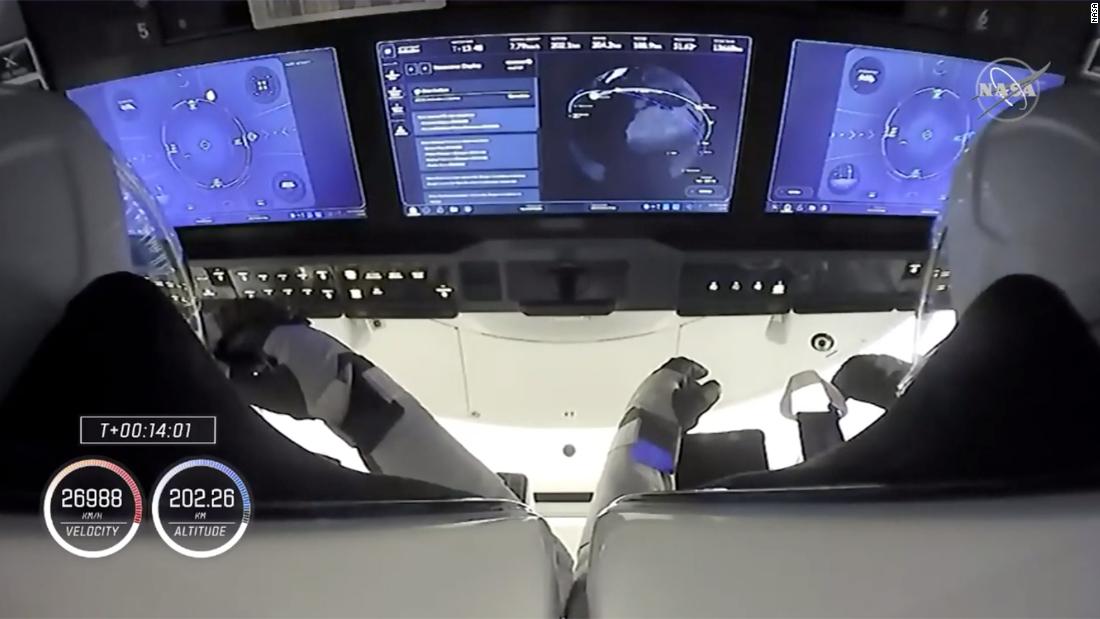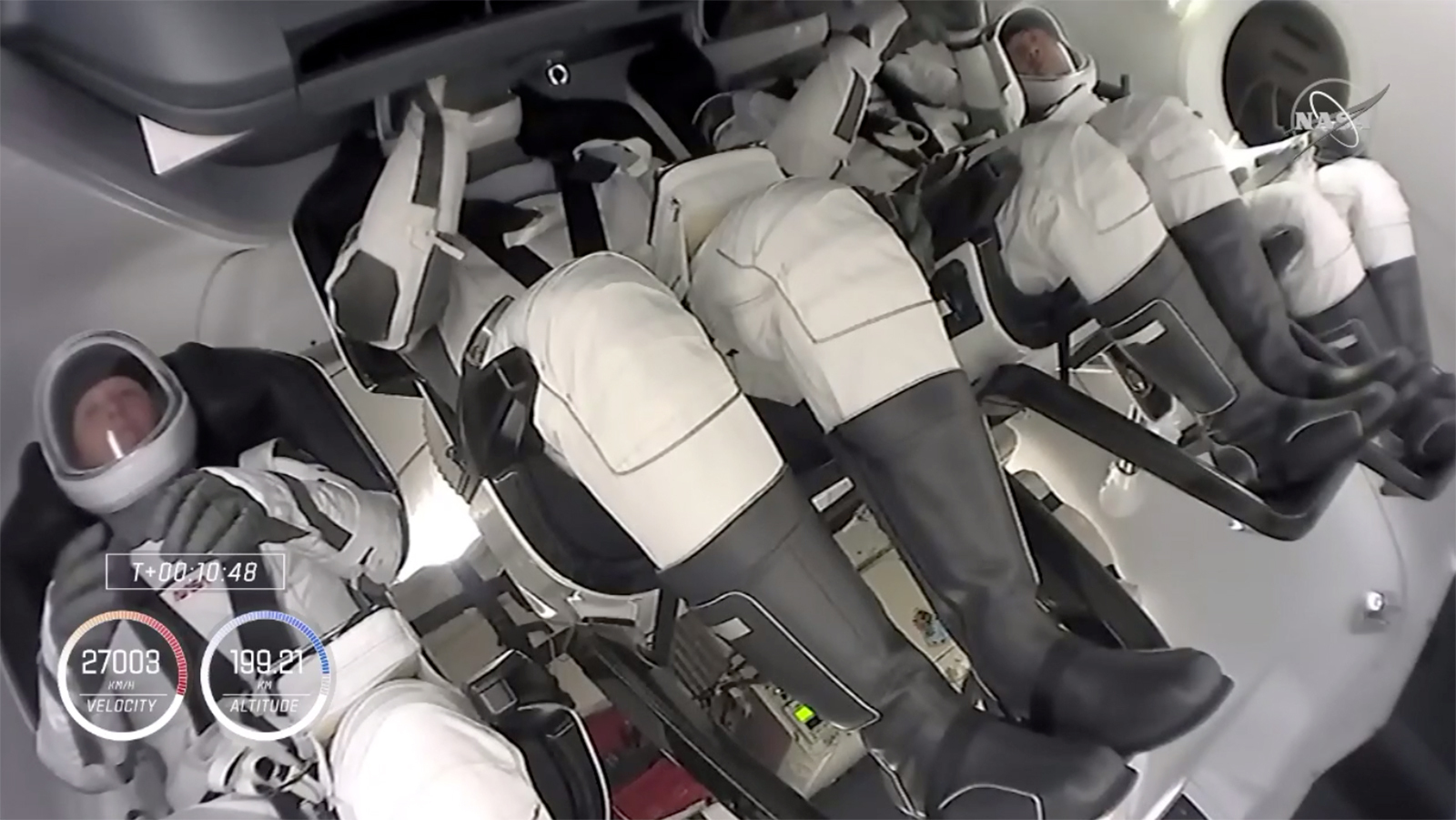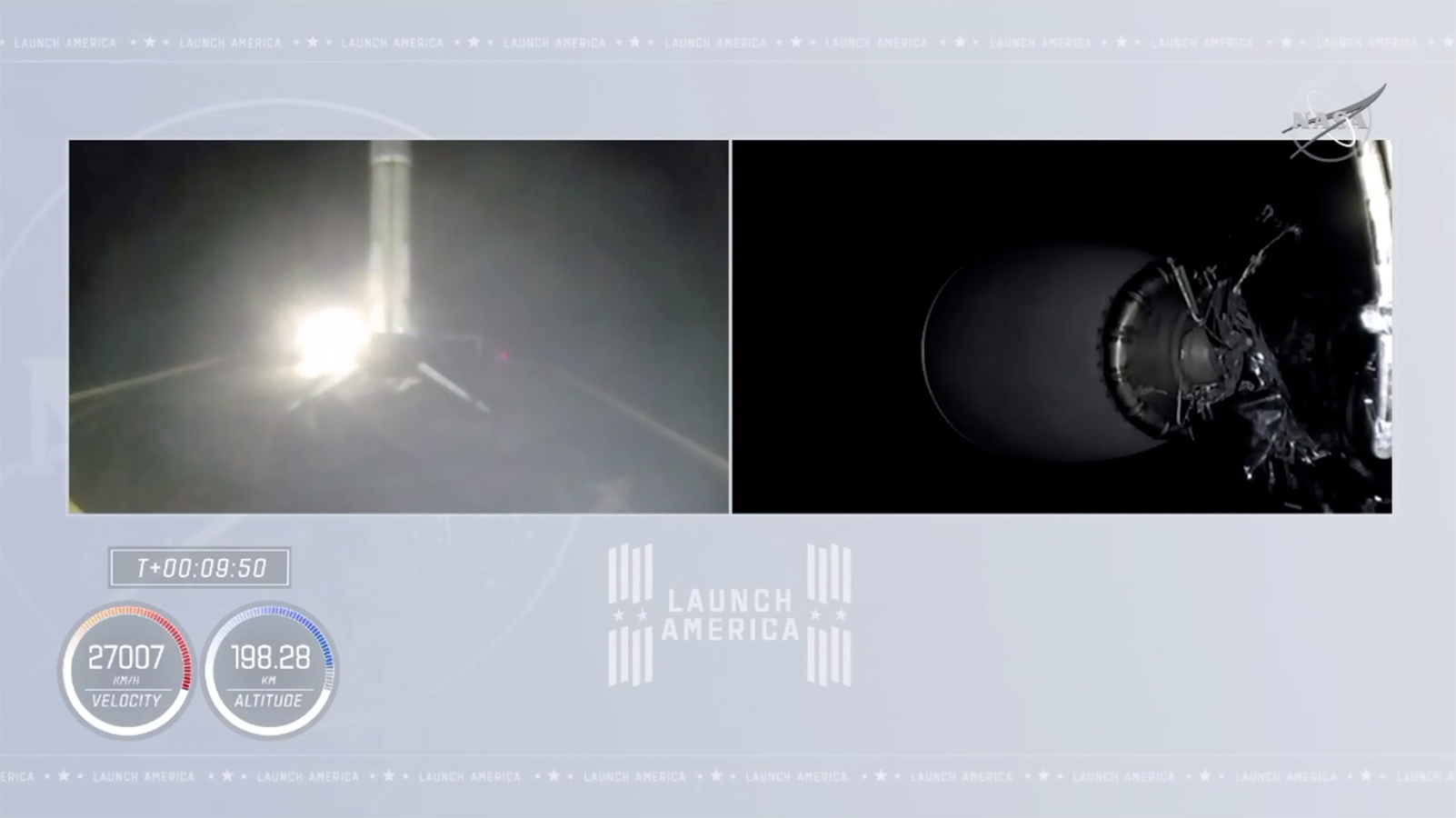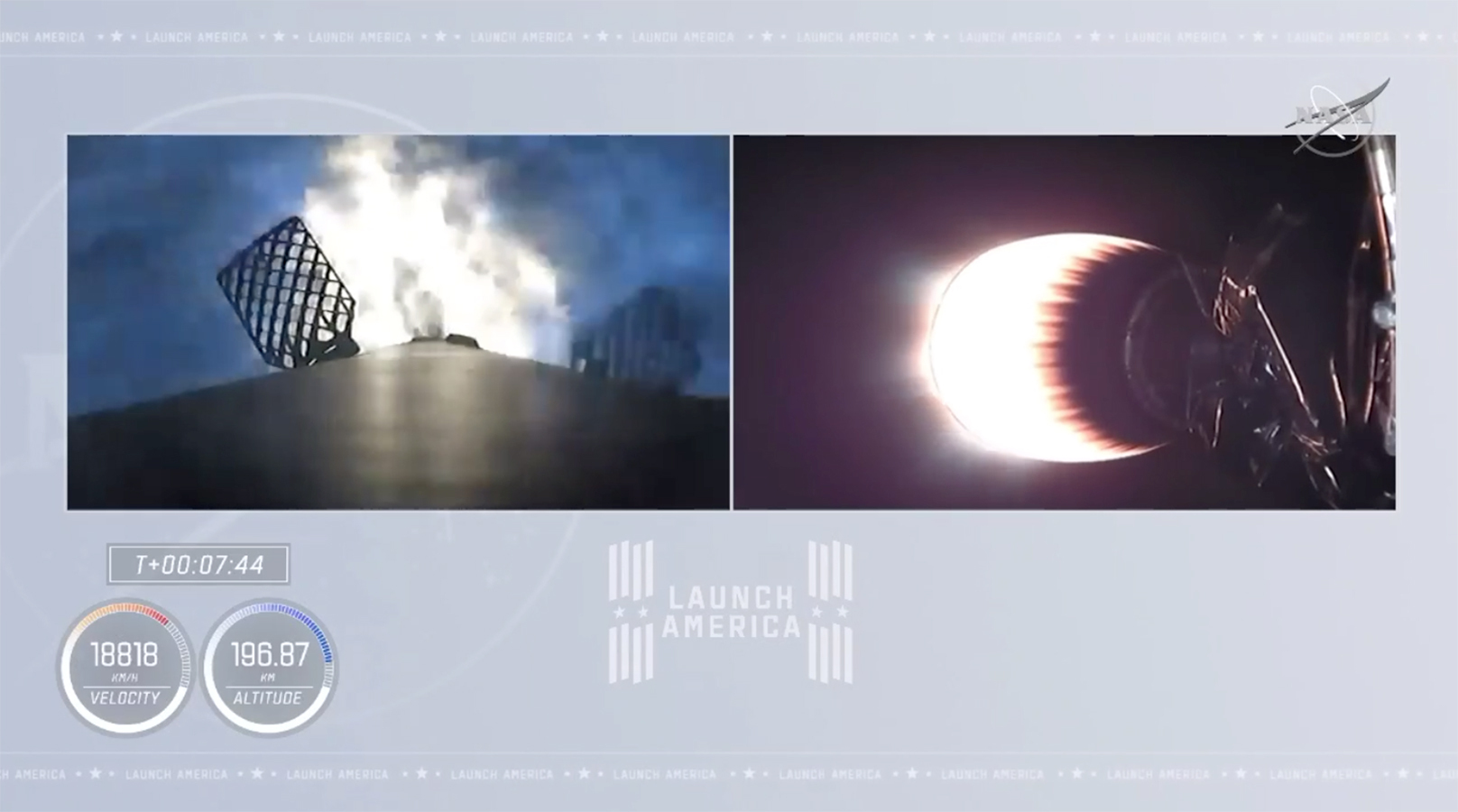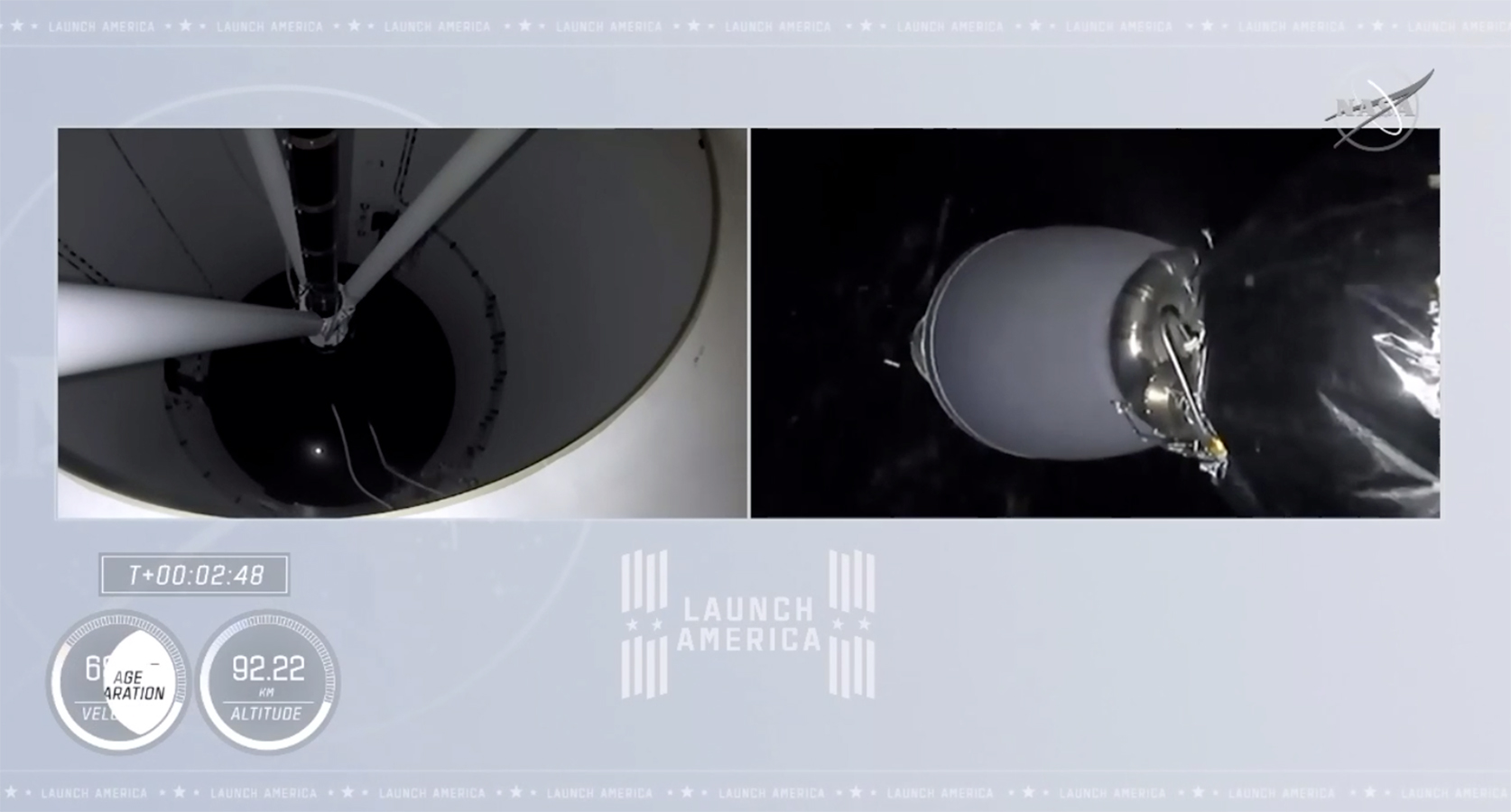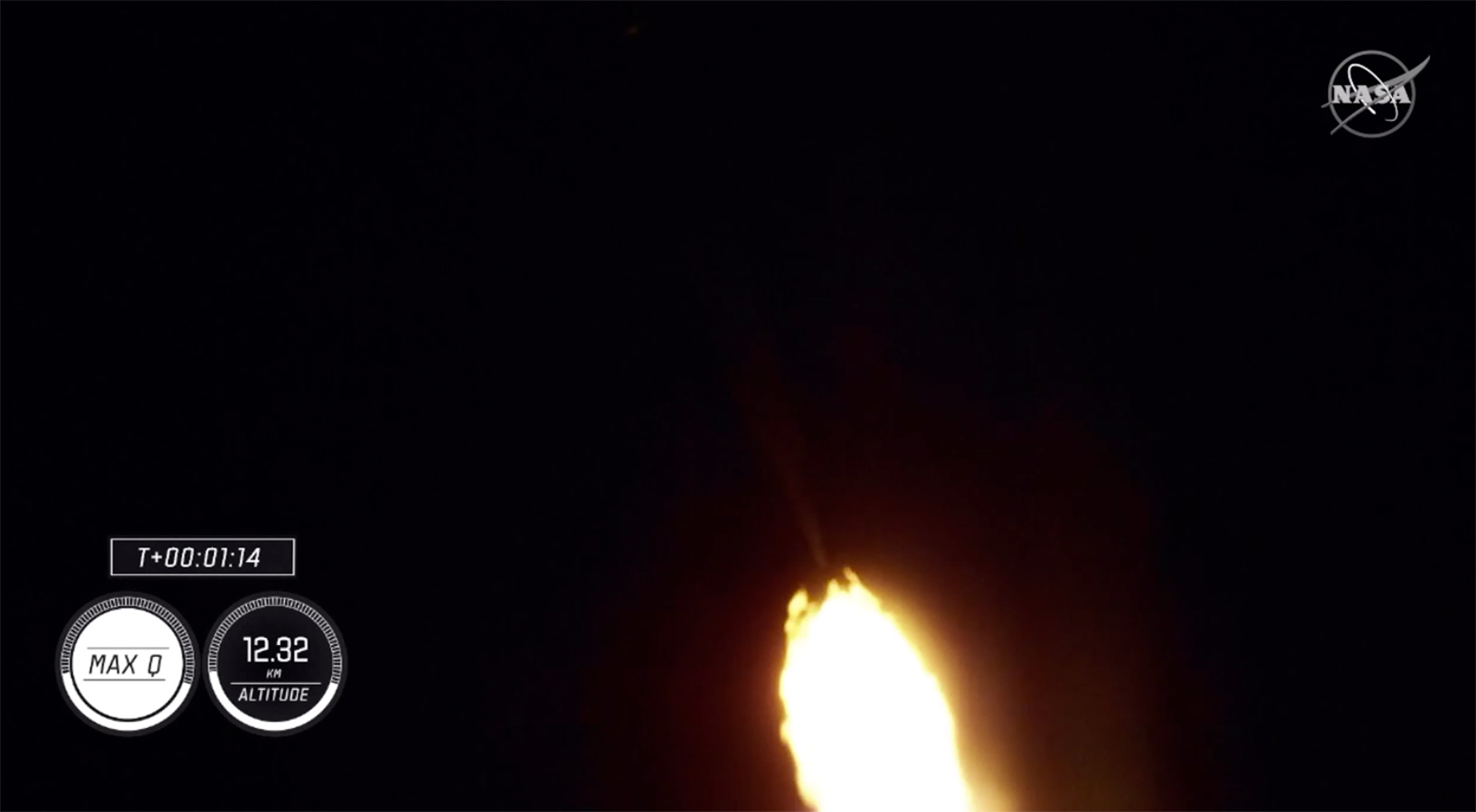
The Crew Dragon is expected to dock with the International Space Station at around 11 pm ET tomorrow.
Who else is on board the ISS: The four astronauts on board this mission — NASA's Michael Hopkins, Victor Glover, and Shannon Walker and Soichi Noguchi with Japan's JAXA space agency — will join NASA astronaut Kate Rubins and Russia's Sergey Ryzhikov and Sergey Kud-Sverchkov, who are already onboard the space station. They arrived aboard a Russian Soyuz spacecraft last month.
The mission ahead: Walker, Noguchi, Hopkins and Glover will spend about six months in space before returning to Earth in the same Crew Dragon vehicle they're on right now. The return trip will see the spacecraft carefully reenter Earth's atmosphere, deploy parachutes and splash down off the coast of Florida.
